The Feast of Tabernacles in Ancient Times
“Rejoice in the Lord always,” the apostle Paul enjoined us (Phil. 4:4). Yet it is not easy to rejoice, let alone always. The key, however, lies in the phrase in the Lord. It reminds us that He is the source and object of our joy.
The Feast of Tabernacles was designed to accomplish the same end. This marvelous, God-ordained holiday of Israel calls upon its celebrants to rejoice in His faithfulness—and helps them in the task.
“Ye shall dwell in booths” (Lev. 23:42)
The first mention of the Feast of Tabernacles is at Mount Sinai (Ex. 23:16). There God refers to the holiday as the “feast of ingathering,” attesting to its agricultural setting. The holiday was to occur at the “year’s end” (Ex. 34:22) in the seventh month (Lev. 23:34). In Exodus 12, God designates the month of Abib, or Nisan (the month when Passover is observed), as the first month of the year (Ex. 12:2; 13:4). Yet the Feast of Tabernacles took place just six months later, in Tishri. How then could Tishri be considered the end of the year?
This apparent conflict is resolved by the fact that Israel had more than one calendar. The religious calendar began with Abib, the month for Passover. Using that calendar, the Feast of Tabernacles rightly fell in the seventh month. At the same time, Tishri was also the first month of Israel’s civil calendar. Therefore, Tabernacles took place at harvest time, just as the new year was beginning and the old was ushered out. The Israelites celebrated the Feast of Ingathering after they had collected the fruits of their labors from the fields and had finished processing them (Ex. 23:16; Dt. 16:13).
The Feast of Tabernacles was one of three annual feast days that all Jewish adult males were required to attend. At Sinai, God did not specify where the men were to “appear before the Lord GOD” (Ex. 23:17). Later, however, He said it would be at a place of His choosing (Dt. 16:15). That place became the city of Jerusalem and, more specifically, the Temple (2 Chr. 7:12, 16).
Leviticus 23:33–43 describe the Feast of Tabernacles in detail. The word tabernacle comes from the Hebrew word sukkah, which speaks of a temporary structure. The feast is called Tabernacles because God required the children of Israel to dwell in temporary booths as they celebrated the holiday.
The festival began on the fifteenth day of the month and lasted seven days. God also added another, but separate, holy convocation day—an eighth day—to the end of the holiday week. Both the first and the eighth days were Sabbath days, so no work was permitted.
However, this prohibition did not include divinely prescribed activities. According to Numbers 29:12–35, the burnt offerings of bulls, rams, and lambs were made to the Lord every day of the feast. Interestingly, the number of bulls offered decreased by one each day. On the first day, 13 bulls were sacrificed; on the second day, 12 bulls; so on and so forth until, by the seventh and final day, only seven bulls were offered, for a total of 70 for the week. It is not clear why this was done. Jewish tradition, however, teaches that these 70 bulls were sacrificed for the sins of the 70 nations descended from the three sons of Noah (Gen. 10, Midrash, Numbers Rabbah 21.24).
Using foliage from four species of trees was another requirement for the Feast of Tabernacles (Lev. 23:40). The text does not specify the purpose of these branches. But it is apparent from Nehemiah 8:15–16 that Jewish interpreters understood the branches were for making the booths.
The men of Israel also celebrated the festival by giving a love offering to the Lord (Dt. 16:16–17). They were not to appear before the Lord empty-handed. To do so would have implied they were ungrateful and proud or that God had not provided for them as He had promised—the latter impugning God’s character.
Every seven years another activity also occurred at the Feast of Tabernacles. The priests and elders of the people read the Law of Moses to the crowd of men, women, children, and foreign visitors who had assembled (Dt. 31:9–13). Everyone was to hear the Word of God.
The final aspect of the Feast had little to do with activity. Rather, it focused on attitude. Everyone, from the head of the house to the most needy and vulnerable, rejoiced on this day (Lev. 23:40; Dt. 16:14). The celebration surrounding the Feast of Tabernacles was to transpire annually without interruption (Lev. 23:41). Sadly, this turned out not to be the case in Israel’s ancient history.
“Ye shall keep it a feast unto the LORD” (Lev. 23:41)
Relatively few recorded instances exist of Israel celebrating the Feast of Tabernacles. We know indirectly the holiday was kept in the days of Joshua (Neh. 8:17).
The first recorded observance coincided with the dedication of Solomon’s Temple (1 Ki. 8; 2 Chr. 5— 7). Because of the festival, all the men of Israel had assembled at Jerusalem. The celebration lasted two weeks: seven days for the dedication of the altar, followed by the seven-day Feast of Tabernacles (1 Ki. 8:65). The additional holy convocation (the eighth day of Tabernacles) also was observed. And on the 23rd of the month, King Solomon dismissed the Israelites to their homes (2 Chr. 7:10). Counting backwards, this means the two-week celebration must have started on the eighth day of the month, which begs an interesting question: Did the people of Israel observe the Day of Atonement on the tenth of the month as required by the Law of Moses? Possibly, but Scripture is silent on the matter. The ancient rabbis believed the people of Israel forgot to observe the Day of Atonement; yet, despite their negligence, God accepted them anyway (Midrash, Numbers Rabbah 17.2). Whatever the case, they went away “joyful and glad of heart” (1 Ki. 8:66). In the years that followed, Solomon dutifully continued to offer the required sacrifices for the festival (2 Chr. 8:13).
After Solomon, came his son Rehoboam. He reigned briefly over the united kingdom; then Israel split in two. In the northern kingdom, wicked King Jeroboam instituted a counterfeit holiday (1 Ki. 12:32–33). In the southern kingdom, the seesaw spirituality of Judah’s kings marred the observance of Tabernacles. Good King Hezekiah reestablished the portion of sacrifices that were needed for the “set feasts” (2 Chr. 31:3), which probably included the Feast of Tabernacles.
The festival is not mentioned again in Old Testament history until the time of Zerubbabel. After the Jewish exiles returned to Judah from Babylon, one of the first things they did was celebrate the Feast of Tabernacles (Ezra 3:4). Sixteen years later, the Lord used the prophet Haggai to encourage the people to rebuild the Temple. One of Haggai’s inspiring prophecies was delivered on the last day of the Feast of Tabernacles (Hag. 2:1).
The last recorded observance of the Feast in the Old Testament is in the book of Nehemiah (8:13–18). After Nehemiah and the people rebuilt the fallen walls of Jerusalem, they gathered to celebrate and thank God. On the first day of the seventh month, Ezra read the Law of Moses to all the people. On the second day of the month, they discovered the precept regarding Tabernacles. Determined to obey God’s Word, they immediately prepared to live in booths. Not since the days of Joshua, roughly 1,000 years earlier, had the people of Israel properly observed the Feast of Tabernacles by living in booths. Also on this occasion, the book of the Law was read daily and the holy eighth day convocation was observed. “And there was very great gladness” (Neh. 8:17).
“That your generations may know” (Lev. 23:43)
As with all Jewish festivals, God had specific purposes for establishing the Feast of Tabernacles.
First, He wanted His people to know of His faithfulness. In every generation, children grow up who “have not known anything” about God and His faithfulness (Dt. 31:13). Thus God required the Law of Moses to be read every seven years at the festival, so everyone could hear it. He wanted every man, woman, and child to hear—and learn to fear and revere Him and observe all His Word (Dt. 31:12).
This is also why God required the Israelites to build booths. As they lived in these temporary structures for seven days, curious children were bound to ask why they had such a custom. The answer gave the parents an opportunity to recount God’s faithfulness, telling especially how God protected and provided for His people during their wilderness journey (Lev. 23:43). It was important to look back in history and reflect on all that God had done. Otherwise, it would become easy to forget the past and, subsequently, to forsake Jehovah to serve other gods. “Remember the LORD thy God,” Moses told the people (Dt. 8:18). The Feast of Tabernacles was meant to help them do just that.
God also wanted His people to worship Him. Thus 199 animals were sacrificed during the eight days of the festival season. Most of those were burnt offerings, symbolizing an individual’s complete dedication to God. The Israelites were to give something back to God when they attended the festival. Giving is an act of worship that acknowledges that all one has comes from God and that God is worthy to receive it back again if He so chooses.
God also wanted the people to rejoice. Biblical rejoicing is not merely for personal gratification but is an act of worship. Rejoicing “before the LORD” (Lev. 23:40) acknowledges God’s provision for His people (Dt. 16:15) and His goodness (2 Chr. 7:10). God wanted His people to worship Him. The Feast of Tabernacles was designed to aid them in doing just that.
Finally, God intended for the Feast of Tabernacles to direct His people toward the Messiah. As with all the God-ordained festivals of Israel, the Feast of Tabernacles foreshadows the person and work of Jesus of Nazareth, finding its ultimate fulfillment in Him (Mt. 5:17). When we hear and learn of Him, God’s faithfulness becomes evident. Our proper response then is worship through our dedication, our giving, and our rejoicing.
By pointing us to Jesus, the Feast of Tabernacles gives us good reason to say, along with the apostle Paul, “And again I say, Rejoice.”
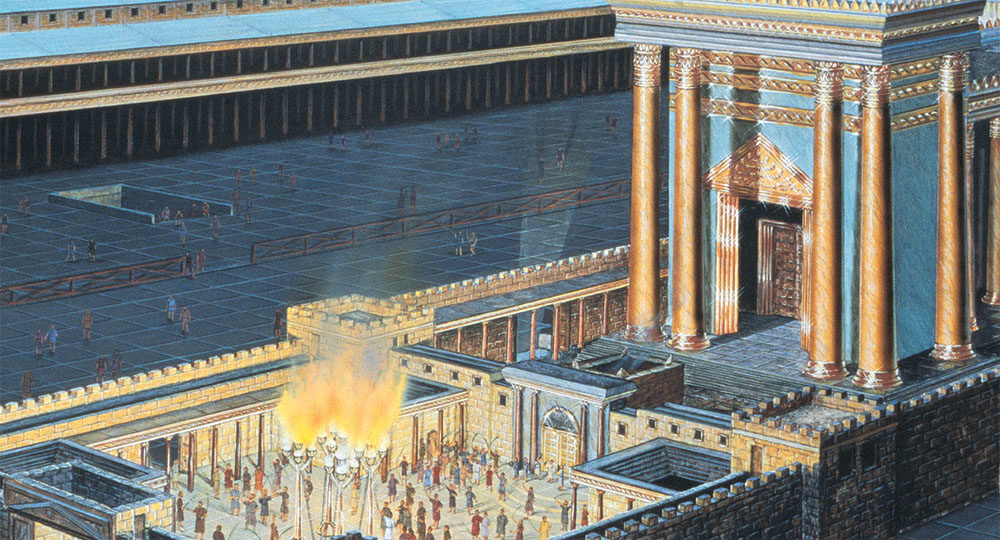

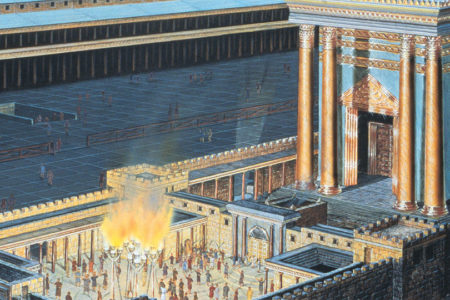
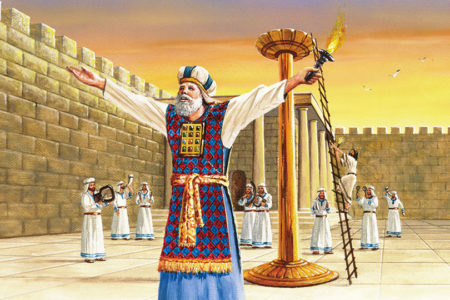
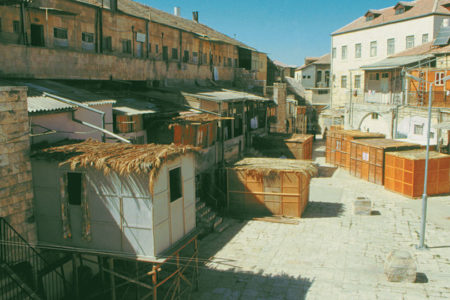
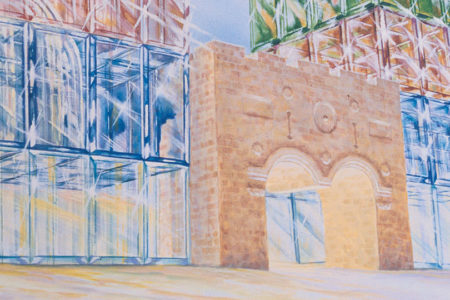

Is it possible that the first feast of Tabernacles was celebrated at the completion of the Tabernacle?
I wanted to know during Feast of Tabernacles in ancient Israel how they had food.
Did they cook the food or what did they do.
You answer is much appreciated as it does not tell anywhere what and how they ate and drank.
Thanks
The spring festivals (passover, etc.) were first celebrated at the Exodus (even before they were codified at Mt. Sinai, if I am not mistaken)….Did the Hebrews celebrate the fall festivals during the 40 year wilderness experience? When did they first celebrate the fall festivals, after they entered the promised land, the year they entered the promised land? Thanks.
Thank you for your explanations. I am beginning a new series in my church on End Times hoping to explain and give better understanding of Matthew 24 and Zechariah in the first lessons.
It is astonishing how God looks at the importance of the Feast of Tabernacles in Zechariah 14, and punishes the nations who refuse to observe it during that period. (I believe it is during the millennial reign of Christ on earth.) This feast carries far more importance to the LORD than I ever realized, especially in the future.
Could somebody please tell me when the daily sacrifices were made during the Feast of Tabernacles, ie. at what time of day. Would they take place each morning, or would they be after sundown, to herald the beginning of each day?
This is important to me for a narrative that I am putting together.
Hello, nice overview, except that it didn’t include the fact that the temporary dwellings was to teach us that our lives are indeed temporary, or as Paul wrote, like ”a tent” that we will put off! The 7 days represent the 7th thousand years being the Millenium when Christ comes as King of kings. As with the creation week, there are 6,000 given to man, with the 7th “day” being the “Millenial rest”.
Some of us Biblical Christians keep it, dwelling in a hotel room temporarily, as we focus on the meaning of life in anticipation of Christ’s imminent return, and our need to be ready to meet Him in the air!
Hello, which of the Feasts were ALL Israelites required to appear before the Lord?
Hello Bruce.
On the eighth day of the Feast of Tabernacles, the 23rd day falling on the Sabbath, did the men in Jerusalem (or if it was in the wilderness) dismantle the wooden booths and organize the outcome of the branches no longer used? I have heard this was the tradition although I can not find a bible reference . Does this dismantling of the wooden branches and leaves of the booth have any actual substance in the Israelite history?
Thank you for this article. Did the people participate at all by eating any of the sacrificed animals? I understand that a portion went to the priests. Would any of these feasts be celebrated by the Levites in the various cities in the areas of the tribes where they lived?
Thank you.